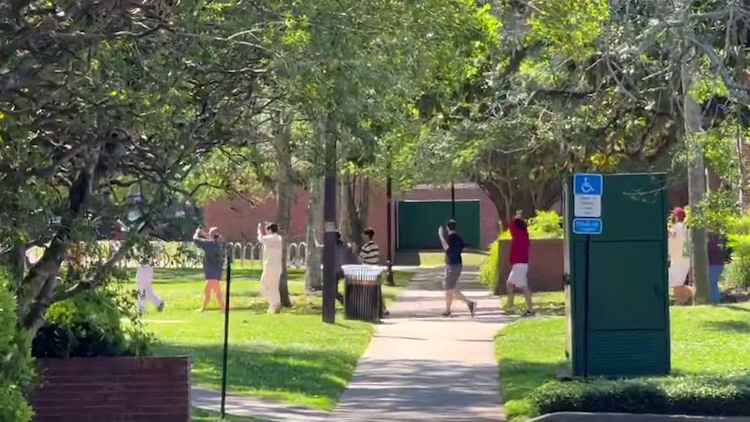The story behind the legendary Black Panther Party's revolutionary newspaper art

OAKLAND, Calif -- Emory Douglas' bright, smile draws you in, and so does his art. Douglas is the former Minister of Culture for the Black Panther Party.
"As a youngster, at my age, how could I build a Ministry of Culture?" said the 78-year-old.
Led by Douglas, the group of artists, Gayle "Assali" Dickson, Malik Edwards, Tarika Lewis, and a few others, created and printed the Panther's newspaper and the caption-filled art that went inside, and on the front and back pages. Together, they solidified a cultural movement.
"The fact that we were so young," said Dickson, a retired teacher, at her home in Richmond, California who worked for the Panthers in her late teens and early 20s. "And so dedicated."
Malik Edwards, now a teacher in Oakland, had just returned from Vietnam where he fought in the war as a Marine.
"The art that I was doing in the Marine Corps was to help kill people. And I felt like the art that I was doing in the Black Panther Party was trying to save people, was trying to educate people, and help them understand the conditions that were around them, and understand that they could overcome that."
Billy X. Jennings, the group's unofficial archivist has kept a room full of Black Panther memorabilia, and a closet full of hundreds of carefully stored Black Panther Party newspapers on the second floor of his home in Sacramento.
"When the party first started, the newspaper was everything. And, the paper would always sell better with Emory's art on the back. A person could really understand without really reading the article," he explained.
The party and the art were based on a ten-point program written by Huey Newton and Bobby Seale: a list of basic human rights, needs, and goals including, proper housing, education, stopping the murder of Blacks, trial by a jury of peers, and disavowing the incarceration of Black people.
Malik Edwards explains why the art and accompanying captions were so pivotal.
"Because remember, back in the 60s, in the early 70s, literacy was a problem in a lot of communities," said Edwards. "While it still is today, we had to make sure we made our point with every drawing we did."
The Panthers often pushed back on extreme repression and abuse by police of Blacks and other people of color. It's a common theme in the art they produced.
Douglas tells the story of an image Huey Newton brought him one day after being out on patrol observing police harassment of young people in the community.
"He brought me an image of a pig on four hooves and said we want to put this image in the paper each week. And we want to put the badge number of the police who are intimidating or violating people's rights in the community."
The image may still seem provocative today.
Douglas laughs. "It may have been provocative. But, it wasn't a distorted interpretation. It was a provocative interpretation."
It was a reaction to the brutality and racism of the era, experienced by a younger Black generation.
"You have to understand this youth movement, never had this country had a movement such as Black Panther Party," said Douglas.
Edwards believes it should stay that way, that an exact copy should not exist today.
"(Civil rights groups) are not gonna do what we did, nor should they. They should come up with what they think is a better idea."










